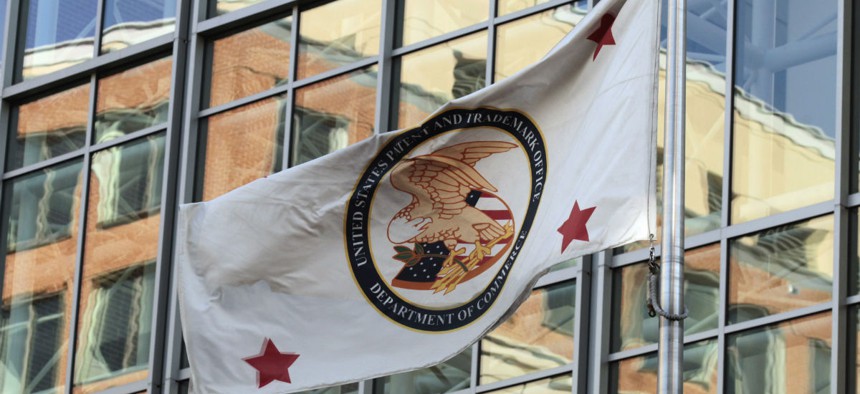Different Inventors with the Same Name? That’s a Problem for the Patent Office

The flag for the U.S. Patent and Trademark Office is seen outside the agency's headquarters in Alexandria, Va. Alex Brandon/AP
On Thursday, USPTO held a competition to help it find an automatic method for differentiating between multiple inventors with the same name.
The Patent and Trademark Office wants to be able to automatically tell the difference between multiple inventors with the same name.
On Thursday, the office brought together seven teams from around the world to present their automated methods for solving this name differentiation problem, also known as inventor disambiguation.
The winning team, from the University of Massachusetts Amherst, designed an algorithm that uses a hierarchical model to examine name repetition, explained Nicholas Monath, during his team’s presentation at the event.
With over 500,000 patent applications submitted to USPTO every year, Monath’s method could help identify inventors buried within this large collection of data.
“Innovation happens at the level of a person or a group of people,” said Alan Marco, chief economist at USPTO, during the PatentsView Inventor Disambiguation Workshop held at the agency's headquarters in Alexandria, Virginia. “Without understanding who those people are, we can only scratch the surface of knowing what it is that drives innovation.”
The event was launched in connection to the office’s newly developed data visualization Web platform, called PatentsView, which allows the public to easily examine 40 years of patent data, according to the USPTO website.
“We should get passionate about disambiguation,” Monath told the audience.
The University of Massachusetts’ algorithm is expected to be integrated into PatentsView, according to the event website. The team will also receive $25,000 for its work creating this method and its future work in helping to integrate it into PatentsView.
Each team had about a month to complete their algorithms, which is not a lot of time, said Joe Bailey, USPTO's Edison research fellow, during the event.
“None of these models are perfect,” he told the audience. “There’s still room for improvements.”





